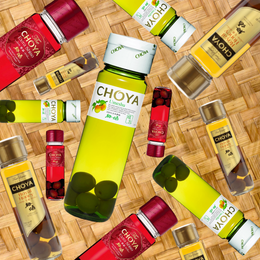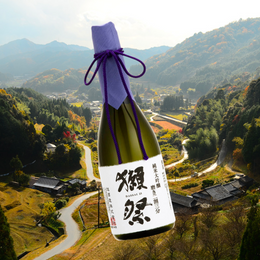Waiting a Millennia for a Dram

Vikings charging to battle on a piece of wetland (635 A.D., colourised) (Image Source: Border Telegraph)
The lowdown
- Peat – the essential ingredient for Islay whiskies – is formed after thousands of years, before being harvested from Scotland’s peatlands
- There has been controversy that Islay would run out of peat by 2021 (although we don’t see signs of that happening yet…)
- The extraction of peat does damage the ecosystem and the climate
- We explore the pros and cons of some solutions to this problem - including using flavouring substitutes for peat (yuck!)
Waiting a millennia for a dram
Scotland’s regulations mandate at least three years of aging before a spirit is considered a Scotch. Some people prefer a whisky old enough to order its own drink from the bar. Truth be told, the whisky in your glass could actually be a millennia in its making. You would know if you take a whiff and it smells smoky.
If we could travel back in time to 700 AD Scotland, we would see tribes of Viking charging and clashing, their feet sloshing through ankle-deep wet marshes with decaying vegetation. This is the very same substance that modern Scots use to produce our favourite Lagavulin, Ardbeg and any other Scotch whiskies that contain any degree of peat and smoke.

What is peat?

Men harvesting peat in Islay (Image Source: Whisky Advocate)
Peat is a naturally occurring material consisting mainly of decayed plant matter (island moss, grass and flowers), other organic materials (viking sweat) and soil built up over thousands of years in wetlands, accumulating imperceptibly by about a millimetre a year. The lack of oxygen, soil chemistry, temperature and other environmental factors line up perfectly such that these plants never fully decompose despite thousands of years passing. Over time, the material pile up and form a mush resembling crumbly, moist brownies, that is flammable and can be burnt for warmth in Scotland’s cold climate.
Peat is not unique to Scotland, however. It can be found in almost every country in the world, from the marshes of Scotland, to vast bogs of Russia and forested peatlands of Borneo.
Peated whisky is the mother of all whiskies

(Image Source: Whisky Advocate)
Historically, throughout the UK and Ireland, peatlands are drained and harvested as a source of fuel for fireplaces, industrial fertiliser and for drying barley in the whisky-making process.
This is also how smoke originally ended up in Scotch whiskies. Peated whisky is the original style of Scotch as traditionally made.
After the barley is malted, the barley is very damp and had to be transferred to a kiln for drying. Before coal was widely available, the Scottish whisky industry burnt peat in kilns to dry the damp barley. The process imparts a distinctive smoky flavour that almost magically winds up in the glass of spirit itself.
Will we ever run out of peat?
A couple of years back, The Whisky Exchange published an article warning fans of Islay whisky that peat on Islay will run out by 2021.

The article cited compelling environment survey results in 1981 and in 2015, explaining that the 1981 survey had overestimated the amount of peat on Islay.
The article went on to note that Laphroaig Distillery will be reinventing itself and releasing unpeated whisky, starting with the Laphroaig Glan Muir expression:

Before you begin hoarding bottles of still-peated Lagavulins and Laphroaigs, the above survey was an April Fool’s hoax perpetrated by the Exchange. There was also no such bottle as the Laphroaig Glan Muir. The last we checked, it is well into 2021 and prices of peated whiskies have not yet skyrocketed.
UK is not in danger of running out of peat within our lifetimes, according to the UK-based International Union for Conservation of Nature. The Scottish whisky industry also uses less than 1% of the peat extracted in the country – 99% of peat is used for heating homes and as industrial fertiliser. At the current rate that peat is being harvested, unless a massive fire outdoor breaks out, experts have calculated that we would get to enjoy about another 2,000 years of Scotch. There is still plenty of peat left for whisky.
Conservation and climate change concerns

(Image Source: International Union for Conservation of Nature - UK)
That said, there are real conservation issues with peat-harvesting. The IUCN has issued papers emphasising that peat is a finite resource, and warning the harvesting of peat causes significant damage to Scotland’s wetlands, contributing to climate change.
Peatlands are natural carbon sinks. Left undisturbed, the trapped thousand-year-old vegetation does not decay so long as it is not exposed to oxygen. Peatlands can store up to 20 times as much carbon as the same area of forest. However, the harvest of peat exposes the trapped organic material to oxygen, causing decomposition and release of massive amounts of carbon dioxide into the atmosphere. For reference, decomposition of organic matter contributes over 90 percent of the carbon dioxide released each year.
Apart from being carbon sinks, peatlands support the ecosystem by filtering water and preventing flooding, enabling certain species of animals to survive. For example, when forested peatlands in Borneo were destroyed, the endangered Bornean orangutans lost their habitat to floods and the population declined rapidly.

It also appears that all of Scotland’s peatlands could be irreversibly damaged within our lifetimes. Although there is still plenty of peat for whisky-making, commercial harvesting of peat has damaged a whopping 80 percent of the UK’s peatlands according to the IUCN. The organisation explains that although peatlands can be restored and regrown, damage has been done insofar as carbon has been released into the atmosphere. It would take thousands of years to lock the carbon back into the peatlands.
Possible solutions
With the thought of a looming apocalypse caused by harvesting peat, a few solutions have been discussed to solve Scotland’s peat conservation issues.
(1) Flavouring substitutes. One idea floated was to replace peat in whiskies with artificial or natural “smokiness” flavouring. This is of course a ridiculous idea in our view because no flavouring substitute would likely replicate the complex and layered smell of smoke in a peated Lagavulin. Nothing else would come close to tasting like it. Current Scottish whisky production regulations also does not permit the addition of any flavouring to whiskies, and we think this has to be right.
(2) Sourcing peat from other locations. Another idea suggested by the IUCN is for whisky distilleries to obtain peat from alternative locations, rather than from the same location that the distilleries have been revisiting since they have been established in the 1800s. For instance, when windfarms are built on a peatland, the exposed peat ought to be harvested.
This solution is compelling, yet it comes up against the idea of terroir. Distilleries (and drinkers) are aware that the location of the peat imparts distinctive flavours that are difficult to replicate with peat from other places. To demonstrate this point, consider the Lagavulin and Laphroaig distilleries. Both distilleries are located on Islay and are in close proximity. However, the distilleries collect their peat from different locations. The result is that the typical Laphroaig has a mossy and sooty peatiness, whereas Lagavulin offers a more maritime character with briny peatiness.
Should distilleries put aside their tradition for the future good of the planet?
(3) Stop using peat in fireplaces. With non-whisky commercial parties using 99% of the peat extracted in Scotland, an obvious measure would be for people to stop burning peat for warmth or using peat as fertiliser. This would very significantly reduce the yearly damage to Scotland’s peatlands. We also agree that peat should be reserved for its most noble purpose – to make Scotch.
However, this is unlikely to come to pass. Furthermore, when prices of oil and coal rise with scarcity, peat would be reassessed as a source of energy and peat consumption could increase.
(4) Improving efficiency in the whisky-making process. The final solution is for whisky distilleries to innovate or improve their processes and use peat more efficiently, thus cutting down on their consumption. This is presumably already done to some extent today. In the past, distilleries would burn peat as a primary fuel to dry their barley. Today, distilleries may use other sources of fuel, but burn some peat to infuse the barley with smoke.
Highland Park Distillery’s process is case in point. The distillery’s process remains largely unchanged for over 150 years. However, the staff have experimented making small adjustments to the malting schedule to reduce the amount of peat needed to achieve the desired degree of smokiness. This is a backstep from tradition but a noble step in favour of the future.
Final thoughts

If the world is to end, I am betting that it would not end by way of a biblical Armageddon or an alien invasion. My money is on a self-induced climatological catastrophe. In any event, though, it would be fitting to toast the end of the world with a good glass of elegantly smoky Scotch.
What would be your preferred bottle to toast the end of the world with? I’ll go with the 30-year-old Lagavulin stolen from my boss’s cabinet.

@charsiucharlie





